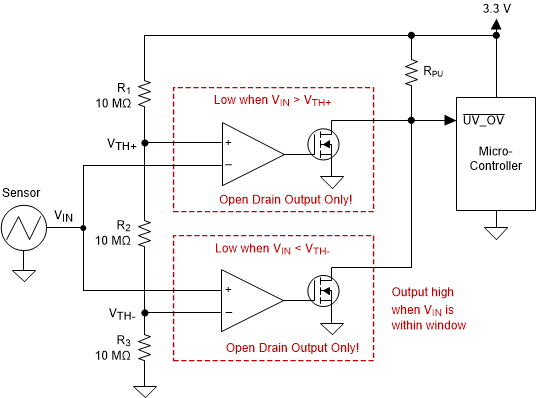SNOSDB3E June 2020 – November 2023 LM339LV-Q1 , LM393LV-Q1 , TL331LV-Q1 , TL391LV-Q1
PRODMIX
- 1
- 1 Features
- 2 Applications
- 3 Description
- 4 Pin Configuration and Functions
-
5 Specifications
- 5.1 Absolute Maximum Ratings
- 5.2 ESD Ratings
- 5.3 Recommended Operating Conditions
- 5.4 Thermal Information for TL3x1LV-Q1
- 5.5 Thermal Information, LM393LV-Q1
- 5.6 Thermal Information, LM339LV-Q1
- 5.7 Electrical Characteristics, TL3x1LV-Q1
- 5.8 Switching Characteristics, TL3x1LV-Q1
- 5.9 Electrical Characteristics, LM393LV-Q1
- 5.10 Switching Characteristics, LM393LV-Q1
- 5.11 Electrical Characteristics, LM339LV-Q1
- 5.12 Switching Characteristics, LM339LV-Q1
- 5.13 Typical Characteristics
- 6 Detailed Description
-
7 Application and Implementation
- 7.1 Application Information
- 7.2 Typical Applications
- 7.3 Power Supply Recommendations
- 7.4 Layout
- 8 Device and Documentation Support
- 9 Revision History
- 10Mechanical, Packaging, and Orderable Information
Package Options
Mechanical Data (Package|Pins)
- DBV|5
Thermal pad, mechanical data (Package|Pins)
Orderable Information
7.2.1 Window Comparator
Window comparators are commonly used to detect undervoltage and overvoltage conditions. Figure 7-7 shows a simple window comparator circuit. Window comparators require open drain outputs if the outputs are directly connected together.
 Figure 7-7 Window Comparator
Figure 7-7 Window Comparator